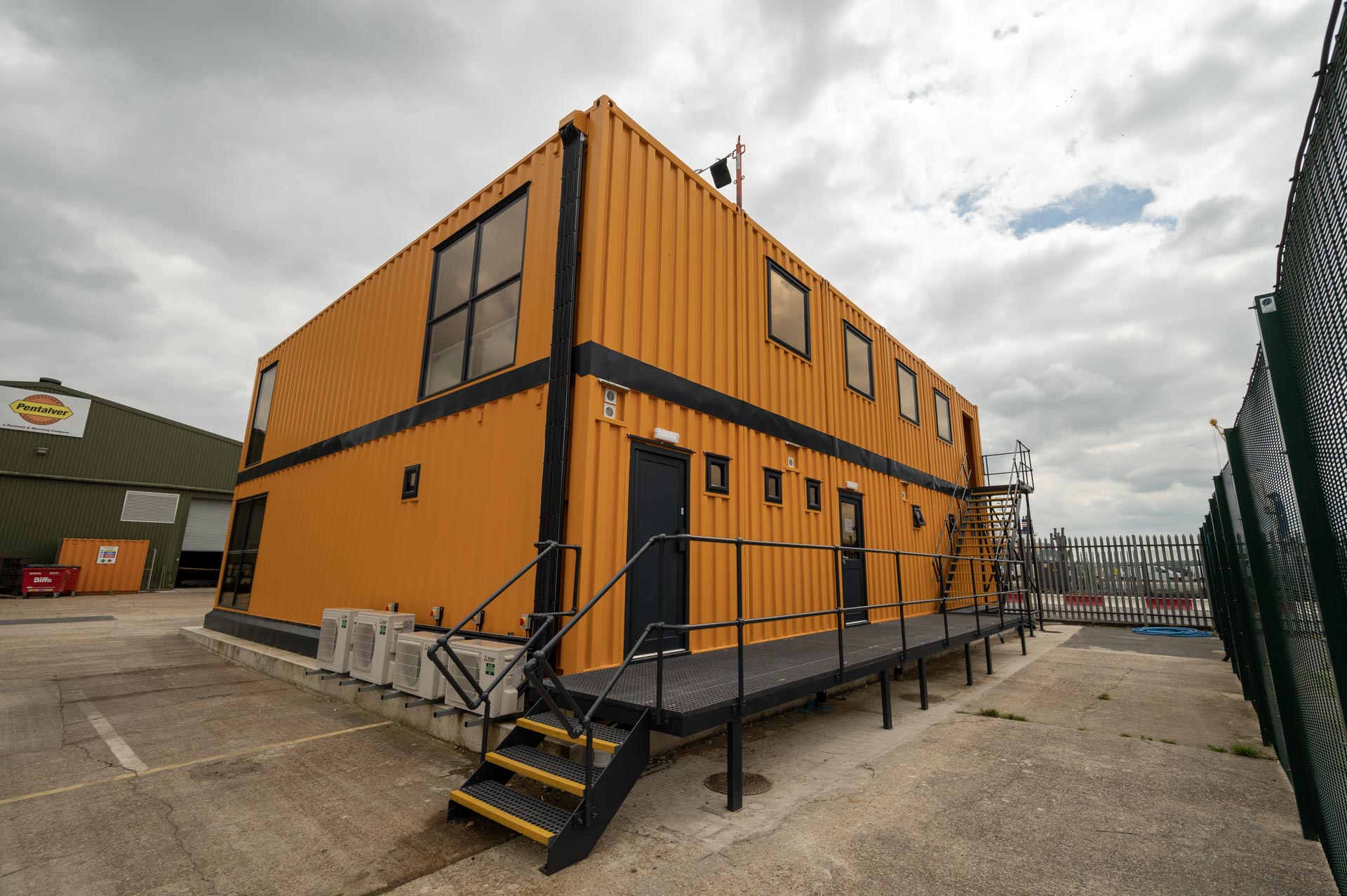They can be a conversion of a single container into an effective living space or they can be a giant landmark or large-scale project capable of housing thousands of people depending on the scope of the project and the number of containers used.
Here are some of the most ambitious container conversion projects that have been attempted.
Festival Viewing Deck
Music, arts and cultural festivals are often an excellent place to test modular, reusable and sustainable ways to build, as with very few exceptions festival structures are temporary and taken down once everyone leaves.
Typically structures such as stages, temporary stalls and viewing decks are made out of scaffold, but for two years the Voodoo Music Experience in New Orleans opted instead for a long line of shipping containers instead.
The six 40-foot containers are emblazoned with cutouts in the shape of the Voodoo logo, which provide a range of vantage points, and the containers themselves work not only as a comfortable viewing space for guests but also store the other components used in the festival throughout the rest of the year.
The Seventh Kilometre Market
Shipping containers are commonly used as market stalls, especially in eastern Europe. However, the biggest of these is the Seventh-Kilometer Market in Odesa, Ukraine, which takes up 170 acres of land and has 16,000 vendors, as well as 1200 security guards.
Its sheer scale makes it the largest organised market in Europe and one of the largest shipping container structures in the world in terms of scale along with being one of the region’s largest employers.
Its current shipping container form was thanks to political reforms undertaken during the Perestroika initiative in 1989, which moved the market from a square so inadequately small the market became known as Tolchok (or ‘shoving’) to a giant area seven kilometres outside of the city limits.
Stadium 974
One of the largest shipping container structures ever made is Stadium 974 in Qatar, one of the football stadiums that is set to host matches in the 2022 World Cup.
Constructed from 974 shipping containers that contained the other parts and components used as part of the modular design, Stadium 974 was a tribute to the Gulf’s tradition of seafaring and trade across the world.
The venue itself, which is constructed to FIFA standards, will become the first tournament venue that can be completely taken down and reused for other events, whilst the waterfront land it sits on will be used for a future development in West Bay.
The use of containers also helped make it exceptionally fast and straightforward to construct, with the time between the excavation of the land and the completed ground being just over two years, two months ahead of the digital launch of the ground.
It also provides potential options for countries who wish to apply for a major sporting tournament but do not currently have the infrastructure to sustain several tournament-level stadiums in the country, as has been seen in Brazil and South Africa in the years since the World Cup.

